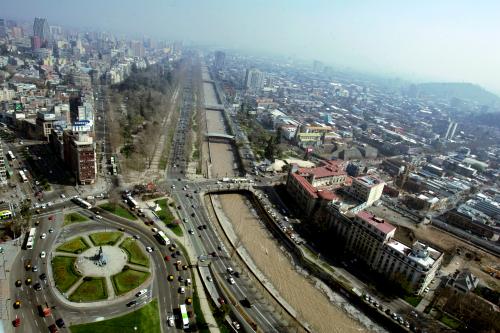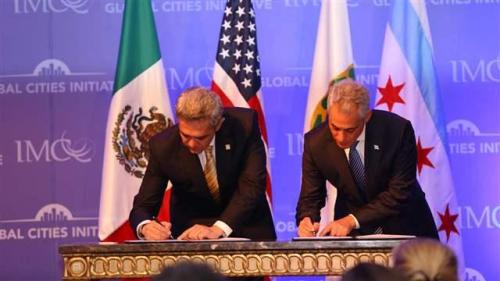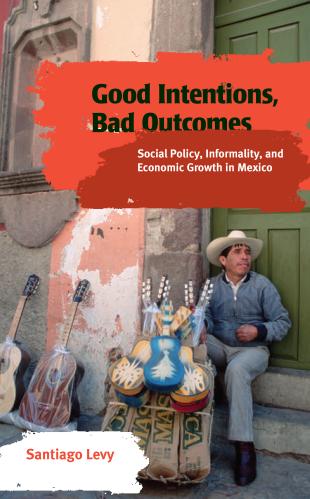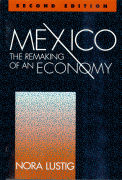Last month, a team from the Metropolitan Policy Program, along with a delegation from the city of Chicago, traveled to Mexico City as part of the Global Cities Economic Partnership (GCEP). Launched at a 2013 event sponsored by the Global Cities Initiative (GCI), this novel partnership aims to expand growth and job creation in both cities by building on complementary economic assets and opportunities.
Together with representatives from World Business Chicago, the Illinois governor’s office, and members of Chicago’s tech startup scene (organized by TechBridge), the Brookings team arrived in Mexico City just as, after a 20 year debate, reforms to devolve greater autonomy and powers to the largest metropolitan area in the Western Hemisphere were finalized. Central to that reform is Mexico City’s enhanced ability to plan and implement its own economic development policy, underscoring the growing importance of city-regions assuming roles once solely the province of state and national governments: fostering trade, investment, and economic growth.
Chicago and Mexico City illustrate this trend through the GCEP. Emerging from a GCI analysis that identified unique economic, demographic and and social connections between the cities, Chicago Mayor Rahm Emanuel and Mexico City Mayor Miguel Angel Mancera established a novel city-to-city collaboration. Since signing the agreement, government, business, and civic leaders in both cities have been experimenting with new approaches to jointly grow their economies. They have tried to foster more trade and investment within shared industry clusters; link economic development support services; and leverage similar strengths in research, innovation, and human capital.
This trip to Mexico City focused on one of GCEP’s early outcomes, a formal partnership between Chicago tech business incubator 1871 and Mexico City incubator Startup Mexico (SUM) that facilitates the early internationalization of firms in both cities. Both organizations advanced the creation of a residency program that will enable entrepreneurs from both incubators to have a presence in each other’s markets.
The GCEP approach of city-to-city global engagement has inspired other GCI participants to try their own models, forming economic alliances to ease global navigation and engagement. San Antonio, Phoenix, and Los Angeles also crafted agreements with Mexico City, each focused on different opportunities built off their distinctive economic assets and relationships. Portland and Bristol have investigated how to leverage their comparable “green city” reputations in the U.S. and U.K., connecting mid-size firms in their unique sustainability clusters for collaboration on research and joint ventures. Similarly, San Diego and London are testing how to promote synergies among companies, academic centers, investors, and workers in their shared life sciences subsectors such as cell and gene therapy.
Home to half of the world’s population, cities generate about three quarters of the world’s GDP, and now serve as the hubs for the growth in global flows of trade, capital, visitors, and information. The future prosperity and vitality of city-regions demands finding new approaches that take full advantage of these global connections.
The Global Cities Economic Partnership emerged from work supported by the Global Cities Initiative: A Joint Project of Brookings and JPMorgan Chase. Brookings recognizes that the value it provides is in its absolute commitment to quality, independence, and impact. Activities supported by its donors reflect this commitment and the analysis and recommendations are solely determined by the scholar
Image courtesy of Maura Gaughan
The Brookings Institution is committed to quality, independence, and impact.
We are supported by a diverse array of funders. In line with our values and policies, each Brookings publication represents the sole views of its author(s).











Commentary
Mexico City and Chicago explore new paths for economic growth
February 12, 2016